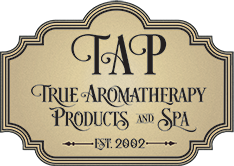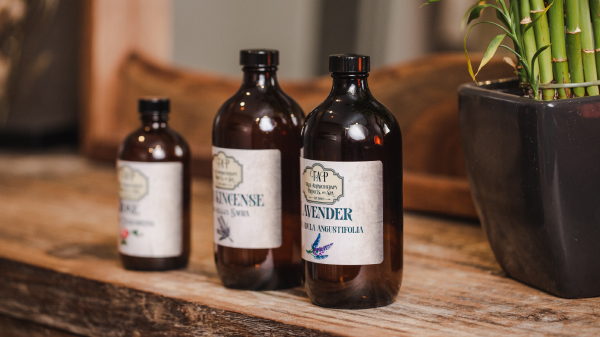Aromatic botanicals have been used and distilled for millennia to promote mental and physical well-being. Early in the 20th Century, a French chemist altered the course of botanicals, moving them from tradition to science, as he began to focus not only their aromatic value, but also their therapeutic and medicinal uses. He coined the term ‘aromatherapy’ and if you are new to aromatherapy and essential oils, it can be overwhelming to navigate the terminology and equipment choices. There is an art to it, but one that can be learned over time. Here is a quick decoding guide to get you started.
Essential Oil:
Essential oils, as the name implies, are produced from one, distilled botanical source. Essential oils are created by steam or water distillation of the aromatic parts of plants. These parts include the leaves, wood, petals, buds, needles, bark or roots. Citrus oils can be cold pressed or steam distilled from the peels of the fruits. For some botanicals, C02 extraction or solvent extraction is used to extract the aromatics. Solvent extracted oils are also known as absolutes.
Carrier Oil
Known as a ‘base’ oil or vegetable oil, carrier oils are used to dilute essential oils to make them safe for topical use. Some examples of carrier oils include: Jojoba, Fractionated Coconut Oil, Avocado Oil and Rosehip Seed Oil. Each carrier oil has its own healing properties and we’ll cover them in-depth in another post.
Synergy Blend:
The word ‘synergy’ is defined by Oxford dictionary as, “The interaction or cooperation of two or more organizations, substances, or other agents to produce a combined effect greater than the sum of their separate parts.” We’ve created a collection of synergistic blends to achieve certain therapeutic effects, then added a carrier oil so that these blends can be applied topically.
Diffuser Blend:
Combinations of essential oils created specifically for use in a diffuser/nebulizer that contain no carrier oil.
Diffuser:
These are devices used to disperse the aroma and therapeutic effects of essential oils. Electric diffusers use ultrasonic vibrations to create diffusion without heat. By applying a few drops of essential oil to a reservoir filled with water, it fills the air with aromatic ‘mist’ that conveys the healing benefits throughout the room. A non-electric ceramic or clay reservoir can also be used with essential oils as a passive diffusion method. There are also plug-in models that employ gentle heat and a cotton pad for room or car use. There are many other options, but these are the types that we offer at TAP. Not sure which to use? Contact us to learn more.
As you can see, Aromatherapy is a fascinating and complex field and as we become more aware of the healing benefits of natural botanicals and essential oils, we see how it can help every person achieve better health and wellness in mind, body and soul. At TAP, we continually improve the way we use and practice the aromatic arts. If you would like to know more about our products, please feel free to browse our online product catalogue and Botanical Garden Page.

